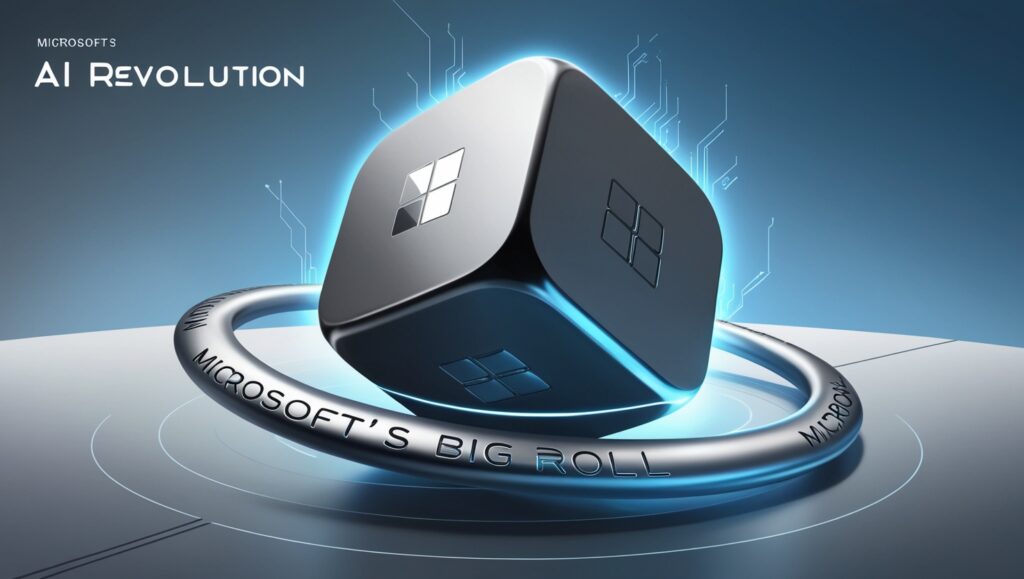There are two types of valuation models for large tech companies: short-term and short-sighted. As an illustration, consider Microsoft, which is investing billions of dollars on AI-related infrastructure despite the sighs from Wall Street.
Wall Street is a huge fan of winners—but only certain kinds of winners. Those that can boast the finest quarterly financial reports and outperform short-term earnings and profit projections are the winners.
Wall Street appears to give very little thought to the long term, particularly the very long term. When a company’s quarterly earnings reveal an unexpected jump, stock prices are far more likely to follow suit than when corporate executives lay out a well-thought-out long-term plan to dominate a rapidly developing technology several years from now.
The stock market’s response to Microsoft’s earnings release in late July was based on that principle. The most significant development for investors? that Microsoft’s Azure cloud division expanded “by only” 30% during the quarter, just 1% less than the 31% growth the company had predicted.
On the following day, traders punished Microsoft. The market as a whole increased; the S&P Index, for instance, gained 86 points, but the company’s shares fell more than four points. And through all of that, the business was reporting 15% growth in revenue and 10% growth in net income.
The major AI news from Microsoft yawns on Wall Street
Wall Street didn’t seem to care about Microsoft’s much more significant announcement from the most recent earnings call—that the business is fully committed to artificial intelligence (AI) and is spending substantially on long-term infrastructure that may not pay for itself for years—at least not in light of the company’s stock price.
During the call with investors, Microsoft CFO Amy Hood stated that nearly all of the company’s $19 billion in capital expenditures was focused on artificial intelligence and cloud computing. Before the AI boom really took off, that number was more than twice as high as it is now. (The construction of the data centers needed to support AI’s enormous processing capacity accounted for half of the expenditures, which were related to infrastructure.
According to The New York Times, the company’s earnings report revealed how much money it is spending on building data centers and purchasing the expensive chips that enable artificial intelligence (AI). Since Mr. Nadella encouraged his senior executives to make significant investments in artificial intelligence in late 2022, Microsoft’s capital expenses have increased every quarter.
Even if Microsoft needs to continue dominating the AI business and making billions of dollars from it in the future, Wall Street was uneasy about all that expenditure. Hood’s explanation that the large expenditures “will support monetization over the next 15 years and beyond” probably alarmed investors.
Wall Street is looking for results now and in the near future, not beyond the far horizon in the next ten years, so fifteen years might as well be fifteen millennia.
Is Microsoft’s significant AI wager wise?
Financial markets are wary of corporations making large investments in technologies that may not yield any returns for years, for good reason. Businesses can be erratic in their quest for the next big thing, and technology is changing swiftly. What appears to be a sure thing now could be a huge mistake tomorrow. There are many instances from history; just consider the excitement surrounding virtual reality. It may never come to pass, but the reward is still as elusive as ever.
AI makes it unlikely for that to occur. There’s a greater chance that the payout will increase with wager size. Ultimately, virtual reality has not generated substantial profits. Even though AI is just getting started, it already has.
Actually, because the corporation is unable to meet the demand for its AI services, Microsoft’s earnings suffered during the most recent quarter. If their data centers had the capacity to supply AI services, Microsoft could have sold more of them this quarter, according to Hood and CEO Satya Nadella during their earnings call.
“We are selling capacity as soon as it becomes available for sale,” Microsoft’s head of investor relations Brett Iversen stated to The New York Times.
It is anticipated that these limitations on demand for Microsoft’s AI services would persist for the rest of the year. However, Hood stated that the corporation will soon begin to see profits by 2025 because of the new investments. Because of the demand for AI, she predicts that cloud revenue will increase by 28% to 29% in the first quarter of fiscal 2025.
That’s just the beginning.
A new “generational thing” is emerging
In Nadella’s words, these are generational things once they get going with you. Additionally, he mentioned that the Copilot generative AI (genAI) companion product for Microsoft 365 (formerly known as Microsoft Office) is growing at a rate faster than any previous generation of software they launched for the Office suite.
When it comes to the hype around new technologies, it is quite skeptical. Tech CEOs rarely deliver on their lofty promises of the sun, moon, and stars—let alone outcomes that reach the cosmic realm.
This occasion is distinct. After reviewing Copilot for Microsoft 365, It can be said that, despite a few issues (most notably its tendency to cause occasional hallucinations), it’s a reliable program that produces useful outcomes. The demand will only rise.
This also applies to many other genAI and AI technologies, for which Microsoft is developing infrastructure. It is true that Microsoft is placing a large wager on AI, and it may not pay off for years. But it’s definitely a winner.
Large wagers will inevitably result in large wins.








